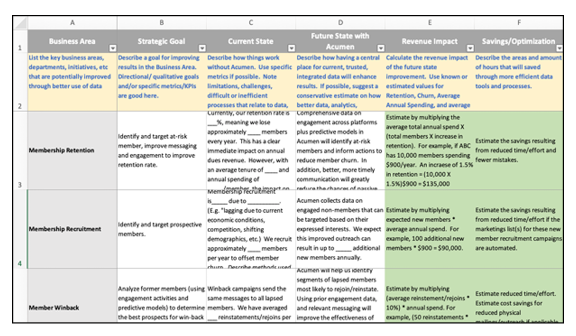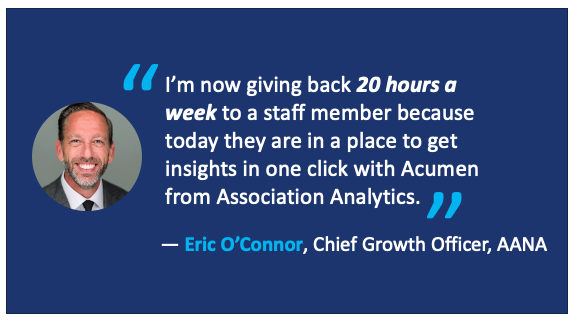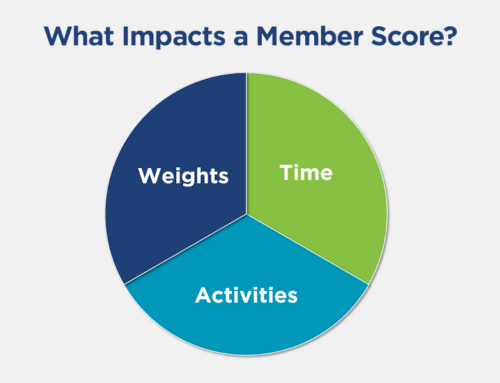Data-driven decision-making isn’t just a trendy phrase; it’s here to stay and essential for any organization’s success these days. Especially in associations, analytics can provide invaluable insights, guiding strategies and shaping outcomes. However, the hurdle remains: how do you convince the powers-that-be to earmark a slice of the budget for analytics? Fret not! Below are five convincing points you can present when making your case, each paired with relatable examples to drive the point home.
1. Focus on the Outcomes
Embracing the Future: We know change is hard and in long-standing organizations, can be met with resistance. The apprehension to adopt a new system or modify a current one is real. However, the trick is to shift the conversation from the process to the outcomes. With analytics, the benefits sell themselves:
- Reducing manual work
- Optimizing processes
- Growing revenue
- Having consistent, trusted data
- Increasing engagement
- Driving your association’s mission
For example, consider an association dedicated to promoting literacy. By using analytics, they realize that most of their online course engagement happens in the evenings. Acting on this insight, they shift their live workshops to nighttime, leading to a 30% increase in participation. This not only boosts engagement but directly aligns with their mission of reaching and educating more individuals.
2. Tell an Emotional Story
The Power of Narratives: People connect with stories. Instead of merely presenting dry numbers or facts, weave them into a compelling narrative. For instance, let’s say your association focuses on environmental conservation.
Instead of just stating, “Using analytics, we can boost membership by 10%,” frame it as, “Imagine a world where 10% more people actively champion the environment, all because we understood their needs better. That’s the power of analytics.”
3. Provide a Benefit Analysis
ROI in Focus: While emotional appeals are powerful, it’s also crucial to underscore the tangible benefits. Let’s take member retention as an example. Suppose current data reveals that 20% of members don’t renew their memberships annually. If analytics could help pinpoint the reasons and lead to strategies that reduce this number to 10%, think of the increased revenue! By providing a clear benefit analysis, you’re showcasing how every dollar spent on analytics can yield real returns. While proving ROI on analytics (and other systems, e.g. your AMS) can be difficult, a benefit analysis provides directional ROI on the key areas that you and your association care about.
Download our free benefit analysis template and watch a short video that explains how to complete it.
Here are some steps you can follow to complete your own benefit analysis:
- Business Areas – list the key business areas that are improved through better use of data. These could be member retention, recruitment, products & services and event registrations.
- Strategic Goal – describe a goal for improving results in each of your business areas. These could be qualitative or specific metrics or KPIs.
- Current State – use specific metrics to describe the current state of the business area like limitations, challenges, inefficient processes that relate to data, integrations and reporting.
- Future State – this is where you make some assumptions and estimates for how insights from analytics will improve your current state.
- Revenue Impact – calculate the revenue impact of the future state improvement using known or estimated values.
- Savings & Optimization – describe the areas and number of hours that will be saved through more efficient data tools and processes.
4. The Collective Power: Analytics Benefits Everyone
Unified Goals and Amplification: Analytics isn’t just beneficial for one team; it’s a benefit for all. Consider the different departments in your association. The event team might be eyeing a better registration system, while marketing focuses on a new email tool. Now, imagine if data could show that members who attend events are 50% more likely to open marketing emails. Suddenly, both teams see the mutual benefits of investing in analytics.
Furthermore, analytics doesn’t just stand alone; it elevates other systems.
For instance, if your association uses a Learning Management System (LMS), integrating analytics could reveal which courses are most popular or when members are most active. This insight can then inform course scheduling, content creation, and more. Essentially, analytics supercharges all your existing systems.
5. Communicate the Art of the Possible
Visualize the Future: Before diving into something new, it’s natural to want a glimpse of the end result. Let’s say you’re thinking of renovating a community park. Before breaking ground, you’d surely want to see a mock-up or blueprint of the envisioned space. The same goes for analytics. By offering a sneak peek of what data can reveal – maybe a dashboard highlighting member engagement or a predictive model for future growth – you’re painting a picture of the potential that’s hard to resist.
A Brighter Future For Your Association
In a world teeming with data, the associations that harness the power of analytics will undoubtedly be a step ahead. It’s not just about securing a budget but understanding and communicating the multifaceted value analytics brings to the table. From telling compelling stories that resonate to showcasing tangible returns, the journey to embracing analytics is paved with promise. So, as you champion for that slice of the budget pie, remember it’s not just a slice you’re securing, but a brighter, more data-driven and strategic future for your association!
If you need help making your case, A2 is here for you! Schedule a quick chat with one of our data experts to learn more.





